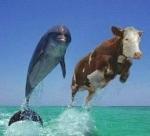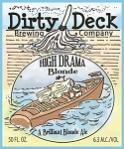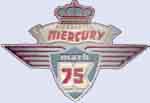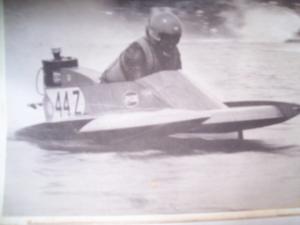"...With competition for new designs and new records providing a healthy stimulus for international and Gold Cup racing, rivalry of another kind kept a thin veil of confusion around the many races which preoccupied the 2,000 stock outboarders among the APBA's 3,682 racing members.
The APBA's amateur stock outboarders went through a season of regional and divisional races, pointing toward the national championships at De Pere, Wis. (See box for winners.) The professional outboarders in the APBA held a championship at Pasco, Wash.
INSURGENTS AT KNOXVILLE
Meanwhile, a rival organization called the National Outboard Association, set up in 1951 when outboarders decided their voice in the APBA's affairs was not proportionate to their representation, went one better and ran off a "world" championship in Knoxville, Tenn. The NOA feels that its winners are as legitimate as the APBA's, since there were more entries in two of the classes at Knoxville than there were in the entire APBA meet in Pasco.
There are some other factors to be weighed. The NOA has no regattas on the Atlantic or Pacific coasts, and thus cannot be described as a truly national body. One step toward unification was taken by an outside authority last May when the Union of International Motorboating recognized the APBA as the official U.S. representative for all international racing matters. Far more was achieved during the year by the racers themselves.
For example, Bill Tenney of Dayton, Ohio, opened the year by setting a new world record for class B hydroplanes in the APBA-sanctioned regatta at Lakeland, Fla. On Aug. 9 he set class B and C outboard hydro records under the APBA at Seattle, then followed by winning the nationals in the same classes at Pasco, and topped it all off by setting still another class C record in the NOA's speed trials at Knoxville. Tenney is not the only racer to compete under both associations. But NOA and APBA have carried on a three-year tug of war for boats and drivers, climaxed this September by an APBA black-list issued against 19 men who drove at Knoxville.
At the APBA meeting in New Orleans, a motion to rescind the black-list was brought up, but no action taken. During the further course of the meeting, some progress was made through peace feelers sent out by both organizations. To date, no concrete move toward cooperation or affiliation has been made by either party. But boat-racers and enthusiasts all over the U.S. are hopeful that the next few years will bring a union of the major groups in the country. Then at year's end there will be one set of champions whose supremacy will be unquestioned, and who can be singled out as the true representatives of their classes for any international challenges that may be made in the upcoming seasons."
-Sports Illustrated (In those days, boat racing was reported in Sports Illustrated!)


 Thanks:
Thanks:  Likes:
Likes: 



 Reply With Quote
Reply With Quote






Bookmarks